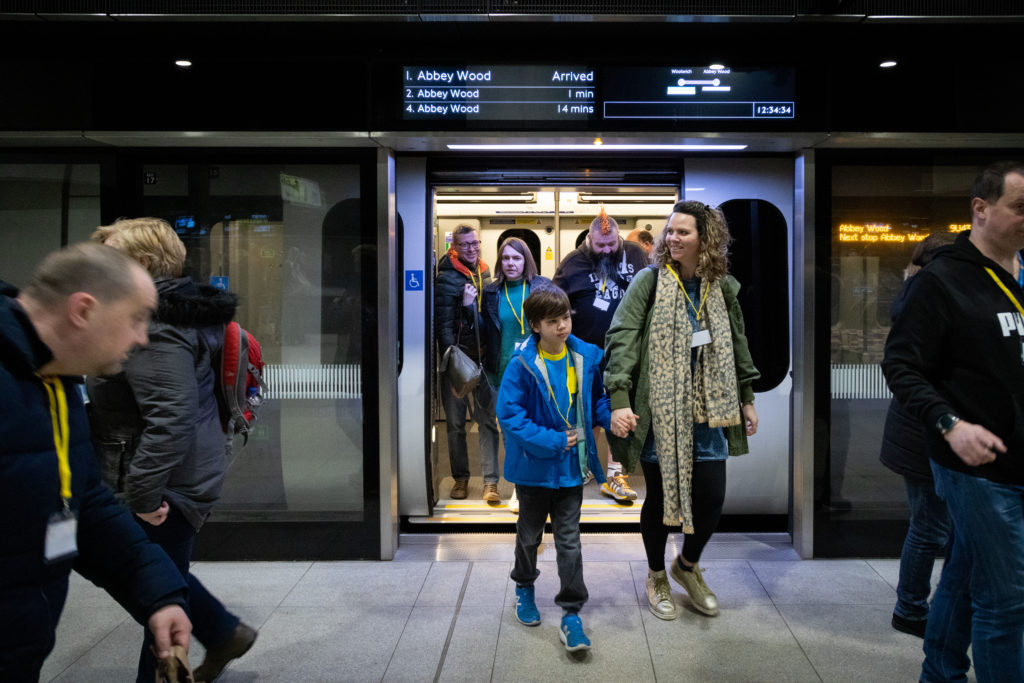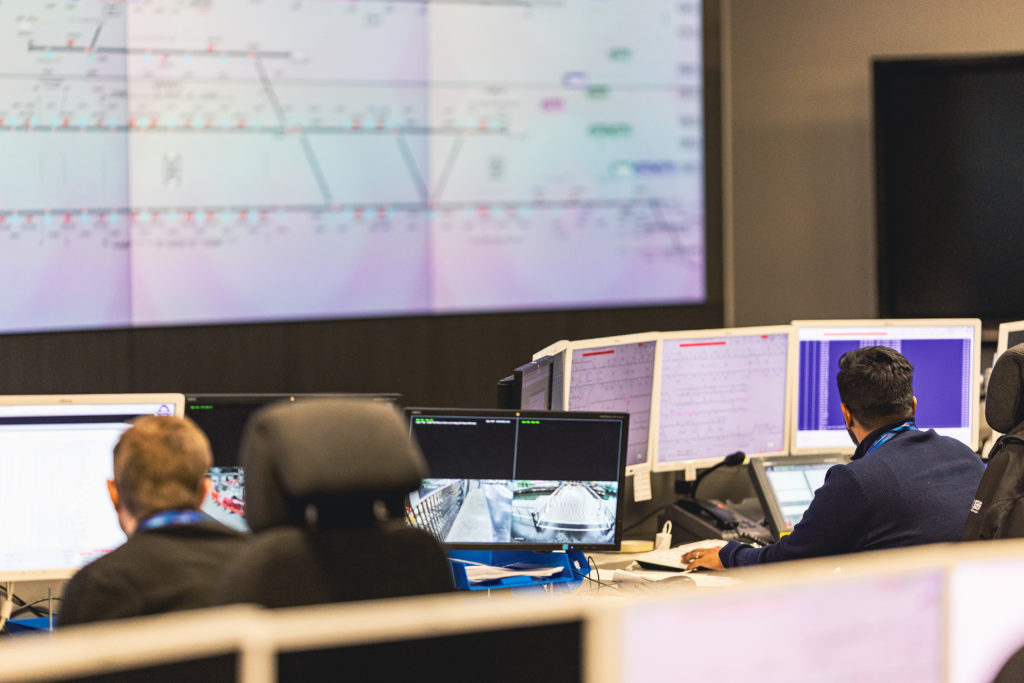The new Elizabeth line opened to passengers on 24 May 2022, the culmination of a 13-year programme which has seen the construction of ten new stations and 42 kilometres of new tunnels through Central London. Transforming travel across London and the South East by dramatically improving transport links, cutting journey times and providing additional capacity, the line is initially operating as three separate railways, with services from Reading, Heathrow, and Shenfield connecting with the central section later this year.
Siemens Mobility has played a key role in delivering both the central section signalling and control system and the communication and station and central management systems for the new line on behalf of Crossrail Ltd. The company worked under two separate contracts, the first of which covered the design, manufacture, installation, and testing of the communications-based train control (CBTC) signalling and control system for the central section of the line. The CBTC system enables high-frequency and automated train operation, with much of the work under this contract carried out at the company’s engineering and manufacturing facility in Chippenham.
In addition, Siemens Mobility in the UK led the design and installation of a host of systems that touch virtually every part of the railway. At its heart is the Siemens Mobility Digital Station Manager (DSM) system which features a fully integrated SCADA (Supervisory Control and Data Acquisition), and monitors and controls 21 subsystems, such as CCTV and platform screen doors. This covers safety systems and 40 equipment interfaces, such as lifts and escalators, across the entire central section including the Station Management System. The information collected by the DSM is then presented to operators in the Route Control Centre (RCC) at Romford to monitor activity, offering unparalleled performance data.
Control and monitoring
A fibre optic data network provides the backbone to the DSM, connecting some 60,000 communication and control assets, each with individual inputs and outputs. These devices range from simple circuit breakers to enormous tunnel fans and include CCTV, driver-only operation, public address/voice alarm (PA/VA) and customer information and telephony systems. In addition, the Elizabeth line data and optical fibre networks, GSM-R, airwave and London Fire Brigade radio systems, and the DSM system are all carried through this network. The SCADA system also provides centralised control and monitoring of the traction power, overhead line equipment, high voltage power and platform screen doors.
By pulling all the information into one place, the operator is able to manage the station network incredibly effectively, from the RCC. From this central location, they can identify and respond to emergencies, for example train or personnel incidents and alarms, and answer calls from help points, using the SCADA data and information to ensure the railway’s performance is optimised.

To take a simple example, when a passenger presses the help point to get some information, a telephone rings on the operator’s desk together with an indication appearing on their DSM screen showing that a phone call is being made and where it’s coming from. Once the operator answers the call, the station CCTV camera which points at the help point, starts recording and the image is played to the operator on a different screen. The operator can also easily navigate to the station layout map where the help point is located and provide further directions and information as requested. The system undertakes these integrated actions which simply triggered by the call being answered.
Maintenance made easy
For the maintainers, all the required health information from different systems and devices, regardless of their communication methods, are displayed within easy reach on a dedicated workstation within the RCC. This enables the maintainer to identify the exact device that has a fault, the type of fault, and send a maintenance ticket to the relevant team.
Before the Elizabeth line entered service, all operators were fully trained, with user manuals and floor walkers helping to make sure any issues were resolved quickly. Siemens Mobility is also providing maintenance support for the DSM system, 24 hours a day, 365 days a year.
London managed stations
While the Elizabeth line is now open to passengers, Siemens Mobility’s work on a programme to provide station information and security systems (SISS) for the seven London Managed Stations is just beginning. Covering Blackfriars, Cannon Street, City Thameslink, Charing Cross, Guildford, Victoria, and Waterloo, the programme will set the template for a new approach in the provision of a SISS that is scalable and deployable for use in any sized station.
Having delivered GRIP Stages 1 to 4, Siemens Mobility is now the principal contractor responsible for delivering Stages 5 to 8, with its teams now approaching the end of the detailed design phase. Work on site is scheduled to begin in September 2022, with a detailed programme being designed to keep passenger disruption to an absolute minimum. This will see assets migrated from the existing life-expired equipment to the modern replacement, with all seven stations being worked on at the same time.

At the heart of the SISS will be the station data network, which will host Siemens Mobility’s DSM and customer information systems, together with PA/VA and CCTV systems. Although this is essentially an asset renewal scheme, much of the new equipment will bring significant benefits to operators and passengers. For example, the new customer information display screens at Blackfriars and City Thameslink will see the old LCD screens replaced with new TFT (thin-film transistor) technology. Similarly, at Charing Cross, LED panels will be replaced with RGB screens, bringing more flexibility for the operator and more clarity for the passenger, along with a reduced whole-life operational cost benefit.
Improved performance
The latest generation CCTV cameras will also be installed, with more than 700 new cameras to be deployed across five of the seven stations. The new cameras feature AI technology so, for instance, if a child is lost, the CCTV recordings can be scanned to find images of a child in a red top and blue jeans. The technology can also measure crowd density, a particularly helpful feature in the event of disruption, to manage overcrowding or to keep passenger numbers at a set level to maintain safe operations.
The PA speakers also represent a step change in technology, with acoustic engineers determining the optimum placement, and the speakers automatically adjusting depending on the ambient noise.
Across the Elizabeth line, London stations programme, and projects worldwide, DSM is delivering improved performance for passengers and operators alike, supporting improved, faster journeys, more efficient station operations, and increased capacity.
Image credit: Siemens Mobility

